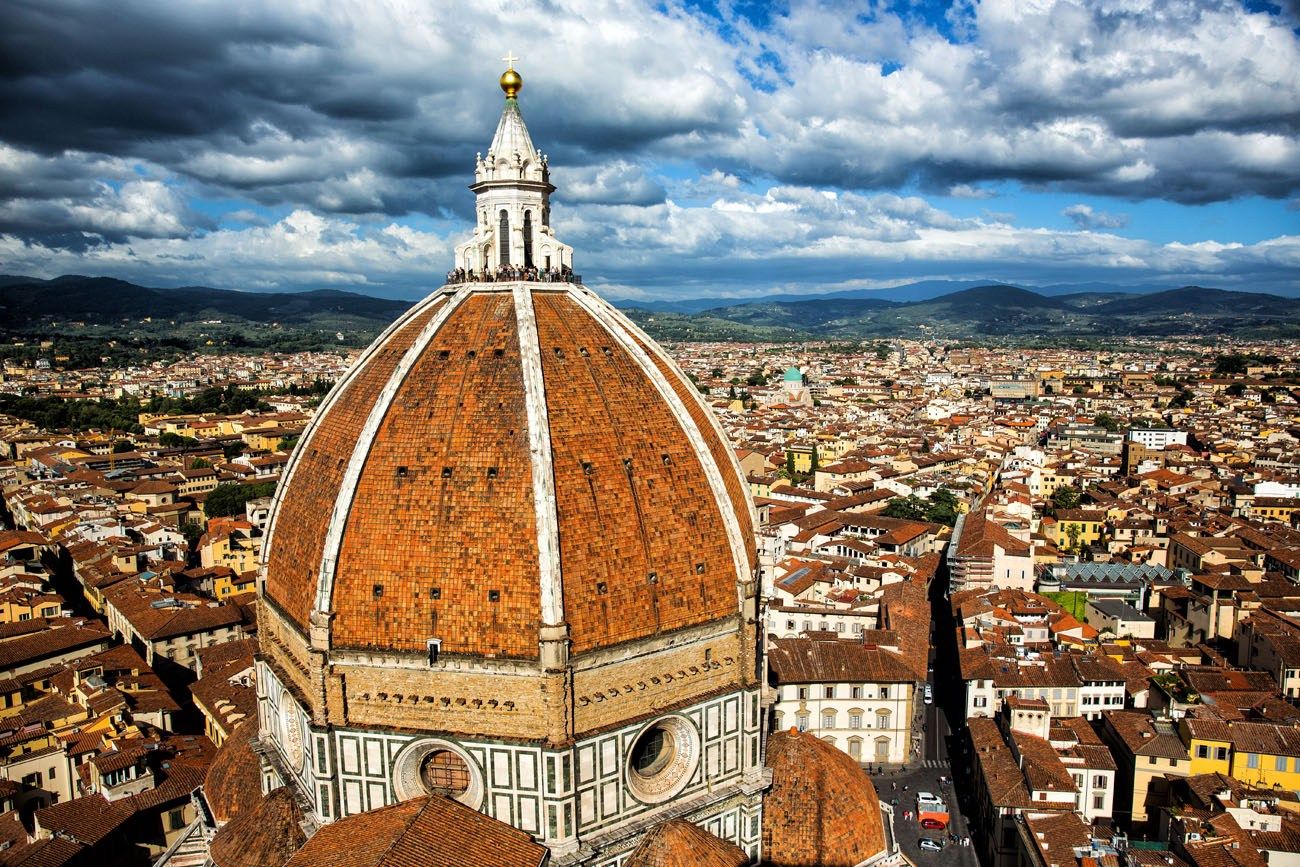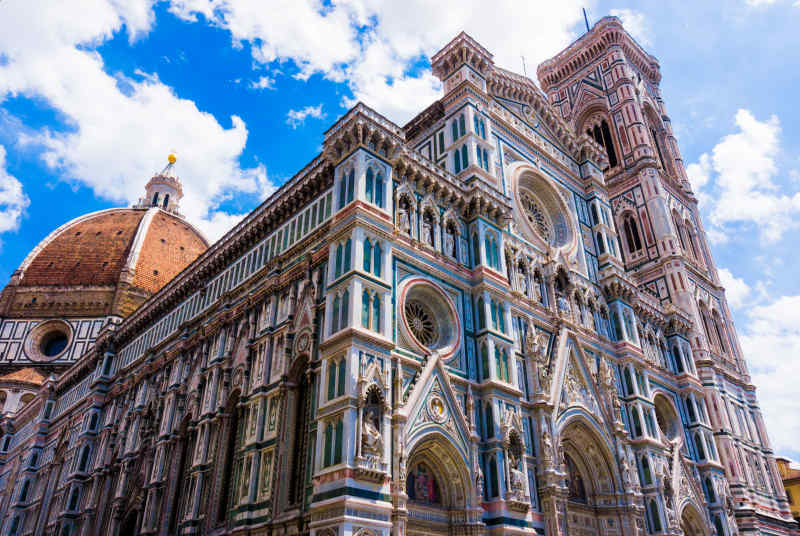
Florence, the cradle of the Renaissance, is a city that whispers tales of artistic genius, political intrigue, and unparalleled beauty. Nestled in the heart of Tuscany, this compact yet captivating metropolis overflows with masterpieces, architectural wonders, and a vibrant atmosphere that beckons travelers from across the globe. From Michelangelo’s David to Botticelli’s Birth of Venus, Florence is a living museum, a place where history breathes and art ignites the soul. This comprehensive guide will equip you with everything you need to plan an unforgettable journey to this timeless Italian gem.
A Glimpse into the Glorious Past: Florence’s Rich History
Florence’s story is inextricably linked to the Medici family, a powerful banking dynasty that rose to prominence in the 14th century. Their patronage of the arts and sciences fueled an explosion of creativity, transforming Florence into the epicenter of the Renaissance. This era, roughly from the 14th to the 16th centuries, saw the birth of groundbreaking artistic techniques, philosophical ideas, and scientific discoveries.
:max_bytes(150000):strip_icc()/florence-aerial-view-531244567-58eb72bc3df78c51624d327e.jpg)
Related Articles about Florence: A Renaissance Dreamscape of Art, History, and Unforgettable Experiences:
- A Traveler’s Handbook to Singapore: A Jewel of Southeast Asia
- Bangkok: The Eternal City of Angels – A Comprehensive Travel Guide
- Milan: A Comprehensive Travel Guide for the Fashionable Explorer
- Uzbekistan: A Silk Road Jewel – Your Comprehensive Travel Guide
- Marrakech: A Symphony of Senses in the Ochre City
Beyond the Medici, Florence played a pivotal role in Italian history. It was a republic, a dukedom, and even the capital of unified Italy for a brief period. Its strategic location on the Arno River fostered trade and commerce, contributing to its immense wealth and influence. Walking through Florence is like stepping back in time, with every piazza, church, and palazzo holding a story of centuries past.
Top Attractions: Where Art and Architecture Collide
Florence’s charm lies in its sheer concentration of world-class attractions. Prepare to be awestruck:
-
The Duomo Complex (Florence Cathedral, Giotto’s Campanile, Baptistery of St. John): The undeniable icon of Florence, the Cathedral of Santa Maria del Fiore with Brunelleschi’s magnificent dome is a feat of engineering and artistry. Climb to the top for panoramic views of the city. Adjacent is Giotto’s Campanile, another climbable bell tower offering a different perspective, and the Baptistery of St. John, renowned for its gilded bronze doors, particularly Ghiberti’s "Gates of Paradise."
-
Uffizi Gallery: Home to an unparalleled collection of Renaissance masterpieces, the Uffizi is a must-visit for art lovers. Witness Botticelli’s "The Birth of Venus" and "Primavera," Leonardo da Vinci’s "Annunciation," and works by Raphael, Titian, and Caravaggio. Booking tickets well in advance is crucial to avoid lengthy queues.
-
Accademia Gallery: This is where you’ll find Michelangelo’s awe-inspiring statue of David. The sheer scale and anatomical perfection of this iconic sculpture are breathtaking. The Accademia also houses other significant works by Michelangelo and a collection of Florentine paintings.
-
Ponte Vecchio: This medieval stone bridge, uniquely lined with shops (historically butchers, now primarily jewelers and souvenir sellers), is an enduring symbol of Florence. It’s the only bridge in Florence that survived World War II bombing and offers picturesque views of the Arno River, especially at sunset.
-
Palazzo Pitti and Boboli Gardens: Once the residence of the Medici, this vast palace now houses several museums, including the Palatine Gallery with works by Raphael and Titian, and the Gallery of Modern Art. Adjacent are the sprawling Boboli Gardens, a masterpiece of Italian landscaping with fountains, sculptures, and grottoes, offering a tranquil escape and stunning city views.
-
Piazzale Michelangelo: For the quintessential panoramic vista of Florence, head to Piazzale Michelangelo. This elevated square offers an unforgettable postcard-perfect view of the Duomo, Ponte Vecchio, and the rolling Tuscan hills beyond. It’s particularly magical at sunrise and sunset.
-
Palazzo Vecchio: The imposing town hall of Florence, this palace boasts impressive architecture and houses a wealth of art and historical artifacts. Climb the Arnolfo Tower for more spectacular city views.
-
Bargello Museum: Dedicated to sculpture, this museum houses masterpieces by Donatello, Michelangelo, and Cellini, offering a fascinating insight into the evolution of Renaissance sculpture.
-
Basilica of Santa Croce: Known as the "Temple of the Italian Glories," this magnificent church is the burial place of many illustrious Italians, including Michelangelo, Galileo Galilei, and Machiavelli. Its frescoes and architectural grandeur are also noteworthy.
Beyond the Masterpieces: Immersive Florentine Experiences
While the iconic attractions are essential, delving deeper into Florence’s soul offers a more profound connection:
-
Culinary Delights: Florence is a gastronomic paradise. Indulge in Bistecca alla Fiorentina, a thick-cut T-bone steak grilled to perfection. Savor Ribollita, a hearty Tuscan bread soup, and Lampredotto, a traditional Florentine street food sandwich. Explore local trattorias and enjoy fresh pasta dishes and world-renowned Tuscan wines like Chianti Classico.
-
Leather Markets: Florence is famous for its high-quality leather goods. Explore the San Lorenzo Market for a wide array of bags, jackets, belts, and shoes. Be prepared to haggle and inspect the quality carefully.
-
Artisan Workshops: Beyond leather, Florence is home to skilled artisans working with ceramics, paper, and jewelry. Seek out small workshops in the Oltrarno district for unique, handcrafted souvenirs.
-
Cooking Classes: Immerse yourself in Tuscan cuisine by taking a cooking class. Learn to prepare classic dishes and gain insights into the secrets of Italian cooking.
-
Opera and Concerts: Check the local listings for opera performances at the Teatro del Maggio Musicale Fiorentino or classical music concerts held in churches and historic venues.
-
Day Trips to Tuscany: Florence serves as an ideal base for exploring the breathtaking Tuscan countryside. Consider day trips to:
- Siena: A medieval gem with its iconic shell-shaped piazza, Piazza del Campo.
- San Gimignano: Famous for its well-preserved medieval towers.
- Chianti Wine Region: Embark on a wine tasting tour through rolling vineyards.
- Pisa: To witness the leaning tower, though it can be a shorter excursion.
Planning Your Florentine Adventure: Essential Travel Tips
To make your trip to Florence as smooth and enjoyable as possible, keep these tips in mind:
-
Book Accommodation and Attractions in Advance: Especially during peak season, Florence can get crowded. Booking your accommodation, Uffizi, Accademia, and Duomo climb tickets well in advance is highly recommended.
-
Wear Comfortable Shoes: You’ll be doing a lot of walking on cobblestone streets. Prioritize comfort!
-
Learn Basic Italian Phrases: While many people speak English, knowing a few basic Italian phrases like "Buongiorno" (Good morning), "Grazie" (Thank you), and "Scusi" (Excuse me) will be appreciated.
-
Stay Hydrated: Carry a reusable water bottle. Florence has many public fountains where you can refill it.
-
Be Mindful of Pickpockets: Like any popular tourist destination, pickpocketing can occur, especially in crowded areas. Keep your belongings secure.
-
Embrace the Pace: Florence is a city to be savored. Don’t rush from one attraction to the next. Take time to sit in piazzas, enjoy a gelato, and soak in the atmosphere.
-
Dress Appropriately for Churches: When visiting churches, ensure your shoulders and knees are covered.
-
Consider a Firenze Card: If you plan to visit many museums, the Firenze Card might be a cost-effective option, offering skip-the-line access to many attractions.
Accommodation Options: From Budget to Luxury
Florence offers a diverse range of accommodation to suit every budget and preference:
-
Luxury Hotels: For a truly opulent experience, consider five-star hotels like the Hotel Lungarno, offering stunning Arno River views, or the Portrait Firenze, known for its elegant suites.
-
Boutique Hotels: Florence boasts charming boutique hotels that offer a more intimate and personalized experience. Look for options in the Oltrarno district for a more authentic feel.
-
Mid-Range Hotels: Plenty of comfortable and well-located mid-range hotels can be found throughout the city, offering good value for money.
-
Budget-Friendly Options: Hostels are plentiful for solo travelers or those on a tight budget. Additionally, many B&Bs (Bed & Breakfasts) offer affordable and cozy stays.
-
Apartment Rentals: For longer stays or families, renting an apartment through platforms like Airbnb can be a great option, allowing you to experience Florence like a local.
Location Considerations:
- Near the Duomo: Ideal for easy access to major attractions but can be noisier and more crowded.
- Oltrarno District: Offers a more authentic, bohemian atmosphere with artisan workshops and local trattorias.
- Near Santa Maria Novella Station: Convenient for arrival and departure, and for day trips.
Getting Around Florence: Navigating the City
Florence is a remarkably walkable city, and exploring on foot is often the best way to discover its hidden gems.
-
Walking: The historic center is compact, making it ideal for pedestrian exploration.
-
Buses: ATAF buses operate throughout the city and are a good option for reaching areas slightly further afield or for tired feet. Purchase tickets from tabacchi shops or newsstands before boarding.
-
Trams: Florence has a tram system, particularly useful for reaching areas outside the immediate city center, such as the airport.
-
Taxis: Taxis are available but can be expensive. They are best used for longer distances or when time is of the essence. Ensure you use official taxis.
-
Bicycles: While not as common as in some other Italian cities, renting a bicycle can be a pleasant way to explore certain areas, especially along the Arno River.
-
Driving: Driving within the historic center is highly discouraged due to ZTL (Zona a Traffico Limitato – Limited Traffic Zones) restrictions and limited parking. If you have a rental car, park it outside the city center and use public transport.
The Best Time to Visit Florence: Seasons of Enchantment
Florence offers a unique charm in every season, but some times are more ideal than others:
-
Spring (April – May): This is arguably the best time to visit. The weather is pleasant, with blooming flowers and fewer crowds than in the summer. The city is alive with a vibrant energy.
-
Autumn (September – October): Another fantastic period. The weather is still warm and sunny, and the summer crowds have subsided. The Tuscan countryside is ablaze with autumn colors, and the harvest season brings delicious local produce.
-
Summer (June – August): Florence can be very hot and crowded during these months. While the city is buzzing with activity, be prepared for high temperatures and long queues at major attractions. Pack light clothing and stay hydrated.
-
Winter (November – March): While cooler, winter offers a more tranquil and budget-friendly experience. You’ll encounter fewer tourists, and the city has a magical, festive atmosphere around Christmas and New Year. Museums are generally less crowded, and cozy trattorias offer a warm respite.
Embark on Your Florentine Dream
Florence is more than just a destination; it’s an experience that will linger in your heart long after you’ve departed. It’s a city that invites you to slow down, to appreciate the beauty of human creation, and to connect with a rich and vibrant history. Whether you’re an art enthusiast, a history buff, a culinary adventurer, or simply seeking a dose of Italian charm, Florence promises an unforgettable journey. Pack your bags, open your mind, and prepare to be captivated by the enduring magic of this Renaissance masterpiece.






